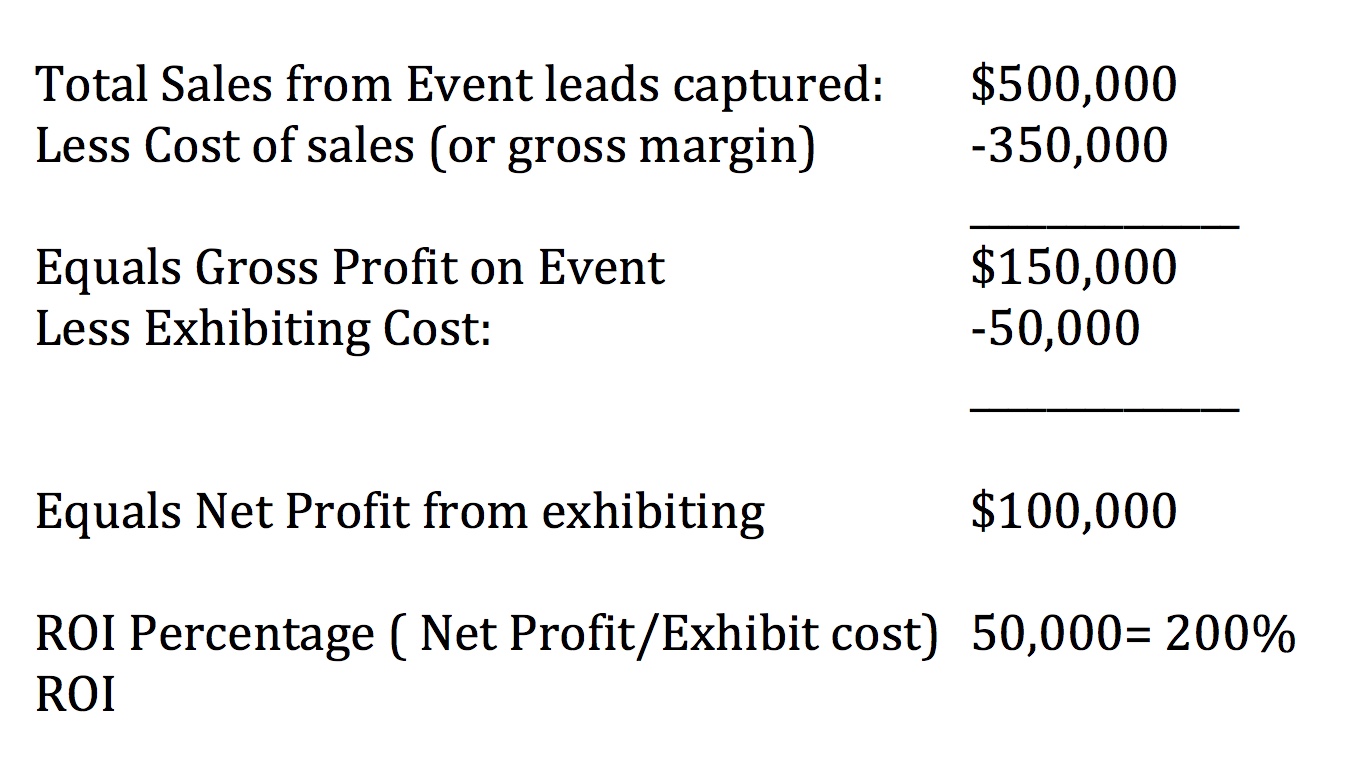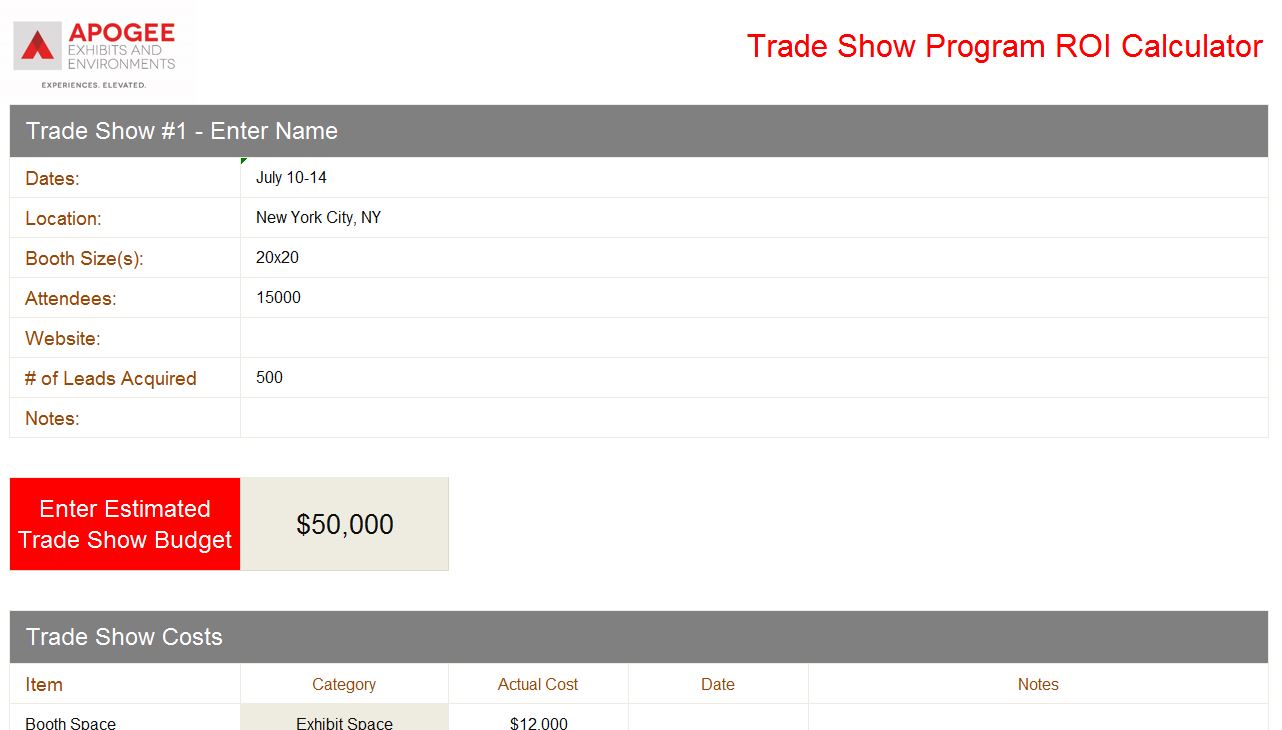Tradeshows, VIP Events, Conferences and conventions are all investments your organization makes in Sales and Marketing. As is the case with any investment you should expect some sort of return on it. But how do you measure the return? What are the metrics used to report a successful event? Cost per lead, Return on Objective, Orders written, all of the above! A recent study by the International Association for Exhibits and Events states that nearly half of all exhbiiting companies have NO PROCESS for measuring results at trade shows! In the short term this may not have much impact, but the long term analysis could mean disaster to an event marketer’s future, via lower budgets, fewer events, and in the end a possible end to what could be a driving force in a company’s success, face to face marketing.
Two primary reasons to measure results at trade shows (and any special events you host) are to simply justify the expense on the investment in a trade show display or exhibit, based on it’s return (we’ll discuss what type of return you may measure shortly), and to also provide a scorecard for effectiveness at specific events, as not all are created equally). To continue to justify your investment in events you have to be able to identify what you’re measuring and why you’re measuring it. ROI varies from event to event and also from year to year.
Here are 5 basic measurements that almost every company should be measuring:
1.) Cost per lead: Simply put this is the overall cost of your event divided by the number of leads gathered. Be careful here as you need to rank the quality of your leads (A,B,C) to ensure you are getting qualified leads.
2.) Return on Objective (ROO): A list of specific goals for any event. They can be “soft” less measurable goals such as new brand launch, product awareness campaigns, or something more quantifiable such as gaining qualified leads from specific vertical markets, or special private event functions within a trade show that showcase specific items or services to a more select audience.
3.) Exhibit budget versus actual cost: Identifying your event marketing budget is hard! There are many variables and it’s important to minimize any “surprise costs” after a show. If your exhibit house isn’t helping you identify your budget you need to ask them to. A very easy tool to use is past event history to help manage budgets and predict future costs. Proper pre-event planning with your exhibit house is a must to help identify potential added costs.
4.) Post-show orders or sales: What’s the life cycle of your selling process after a trade show? How long does it take to turn a qualified lead into a future order or call to action? In “The Cost Effectiveness of Exhibition Participation: Part I and Part II,” the Dallas-based Center for Exhibition Industry Research (CEIR), provides several stats that prove that, on average, exhibition leads take less time and money to close than field-sales leads. According to the study, the cost of an initial face-to-face meeting with a prospect is $96 for an exhibition lead; whereas, without an exhibition lead, that figure is $1,039 (including $443 to identify the prospect prior to the initial sales call and $596 for the field-sales call). Thus, meeting a prospect at an exhibition versus finding and meeting a prospect in the field saves $943 per prospect.
5.) Web and Social Media traffic (pre versus post event): This is an important metric in this advanced digital age. It’s how your buyer’s now research your company, buy products, and live their lives! Website and Social media are an integral part of your Exhibit plan. It’s a “trickle” campaign that can indirectly nurture your leads from events. Notice an uptick in followers and website visits after an event? If so then you probably did some good social media marketing and website promotion beforehand. These sites are where your future customers are going to further vet you so measuring this and promoting/driving traffic prior to and after your event is another important thing to measure.
Finally we should attempt to measure our overall ROI from any events. This is a longer term analysis as you will need to know post-show revenue generated from the events. One you have that the formula is relatively simple as this example below shows:

Of course this is just an example, but this shows that every dollar invested in Exhibiting is yielding a 2X return on investment. Some events will be lower, some higher, but the importance is in the measurement to be able to justify or eliminate events.
We also offer a neat little ROI and show analyzer that can also help you evaluate events. If you’d like to have this sent to you simply let us know

Now you are armed with the weapons you need to evaluate, measure, and hopefully justify your event marketing budgets!


